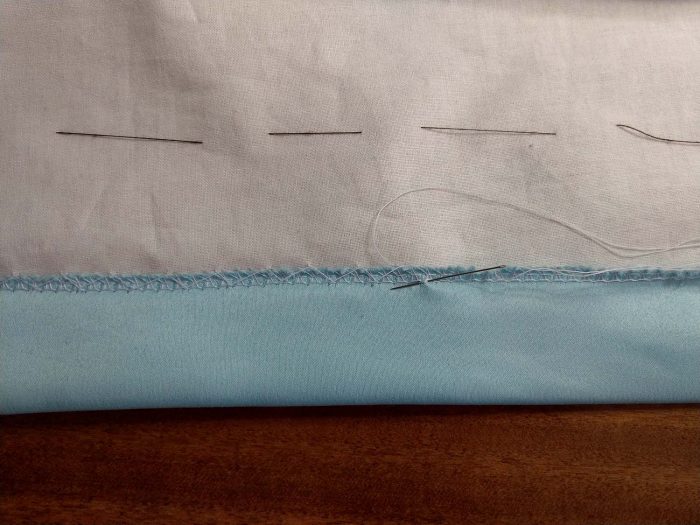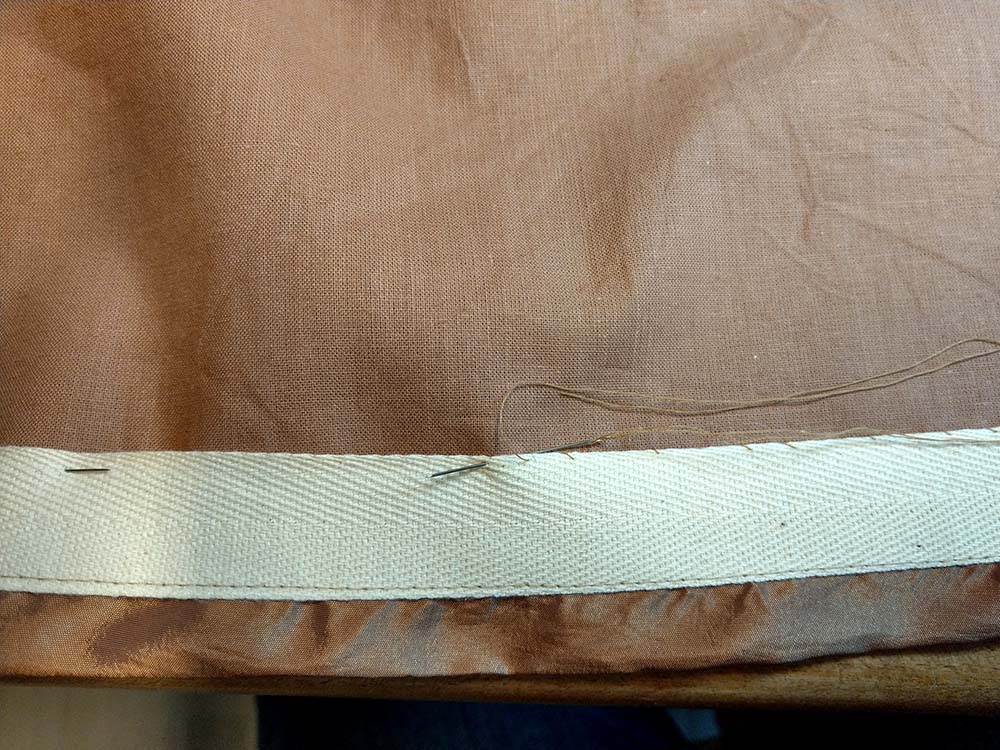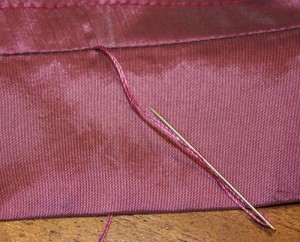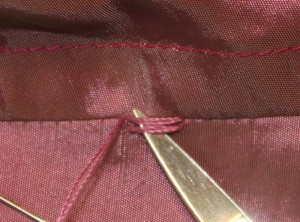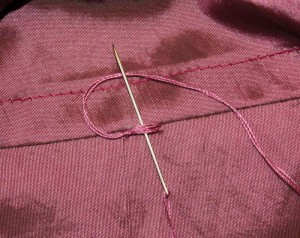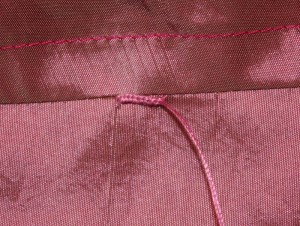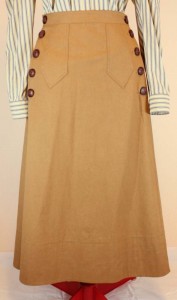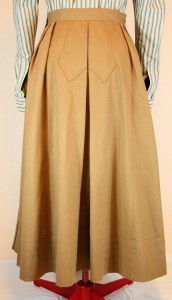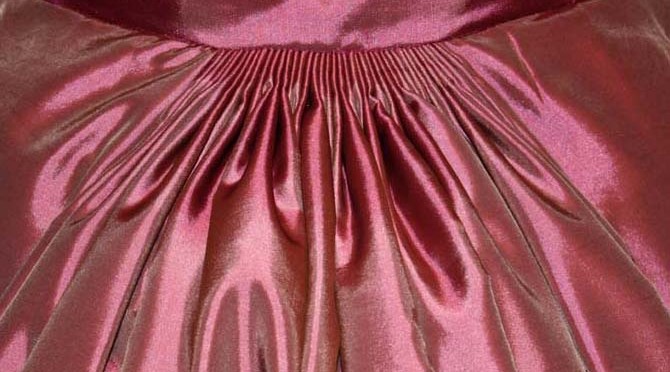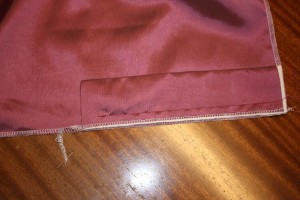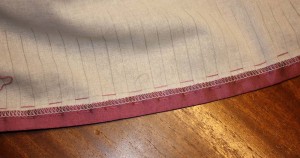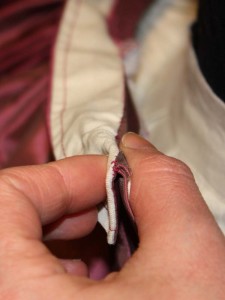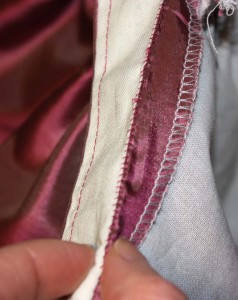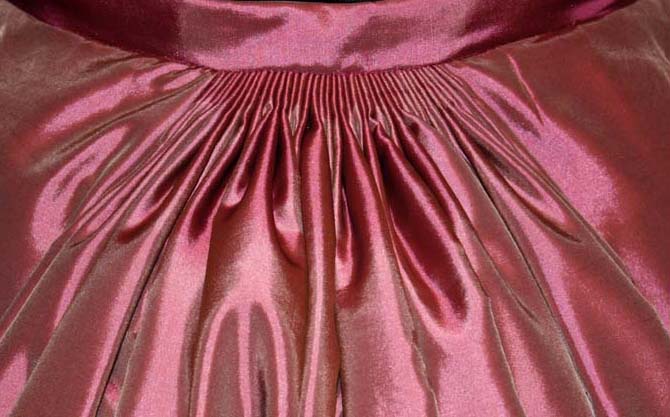To achieve the perfect shape for your vintage skirt more support than just flatlining the skirt with cotton fabric is needed, especially the hem line needs additional structure. Depending on the choosed fabrics and materials the skirt will be washable or not.
In extant dresses often buckram is used, not only to reinforce the hemline, sometimes every single skirt panel was interfaced throughout to achieve the desired shape. Buckram is still available, but can not be washed. When I made this skirt, I decided to use a washable and light weight hair canvas from polyester fibers.
After cutting all pattern pieces from fashion and lining fabric (and of course a fitting with the panels basted together to determine the hemline), prepare the hem interfacing the following way: Take your pattern pieces (with all adjustments transferred) and mark the seamline. Draw another line circa 8″ (20cm) parallel to the seamline. Cut out this 8″ (20cm) wide hem-shaped strips and transfer to your stiffening fabric. For a hemline of several meters , you´ll needed to piece the strips, joining them with a simple overlapping seam (don´t forget to add seam allowance)
Place the skirt lining on top of a table with the wrong side up, and mark the hem line. Line up the interfacing with this line.
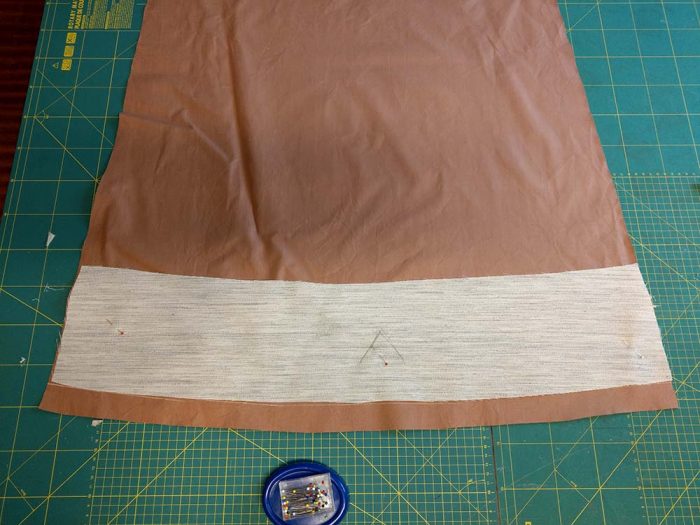
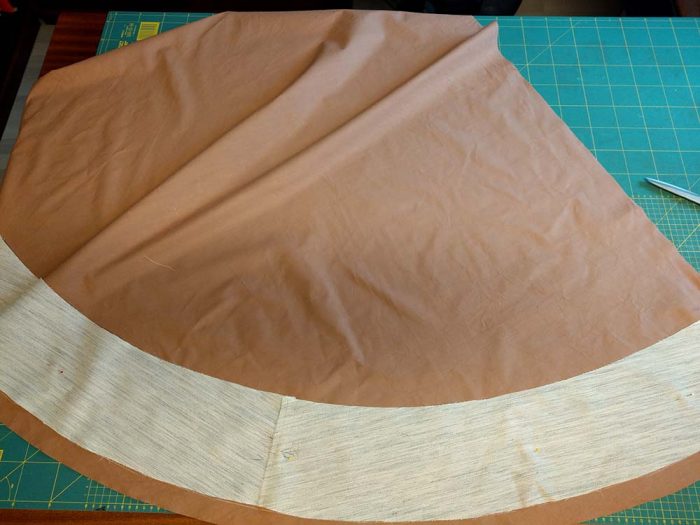
Sew the interfacing to the lining along both edges, circa 3/8″ (1cm) parallel from the edge. Turn the the hem allowance around the edge of the interfacing and stitch down the hem.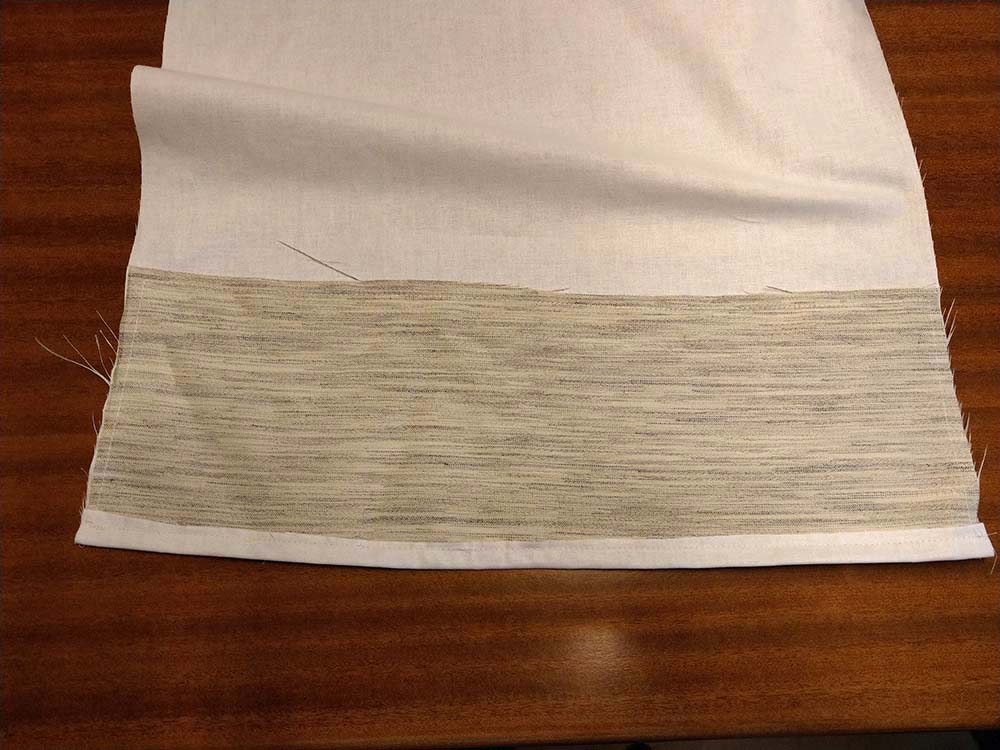
Next step is to flatline the fashion fabric: line up fashion fabric and lining, wrong sides together, and baste the two layers together inside the seam allowance. From her on treat the two layers as one and sew together the skirt as usual.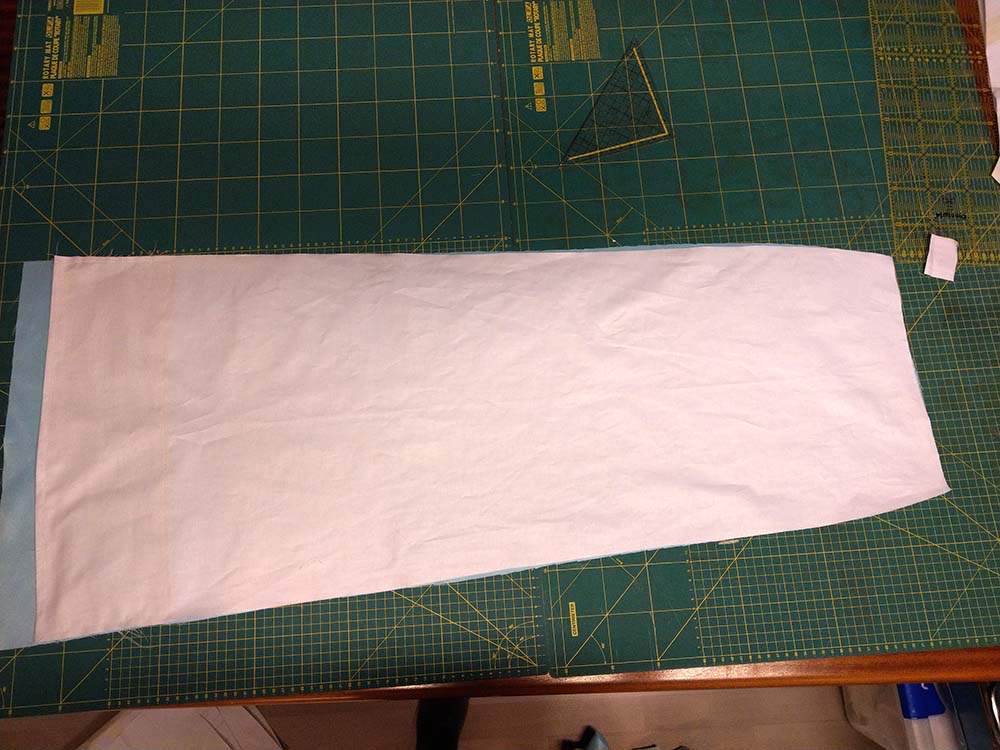
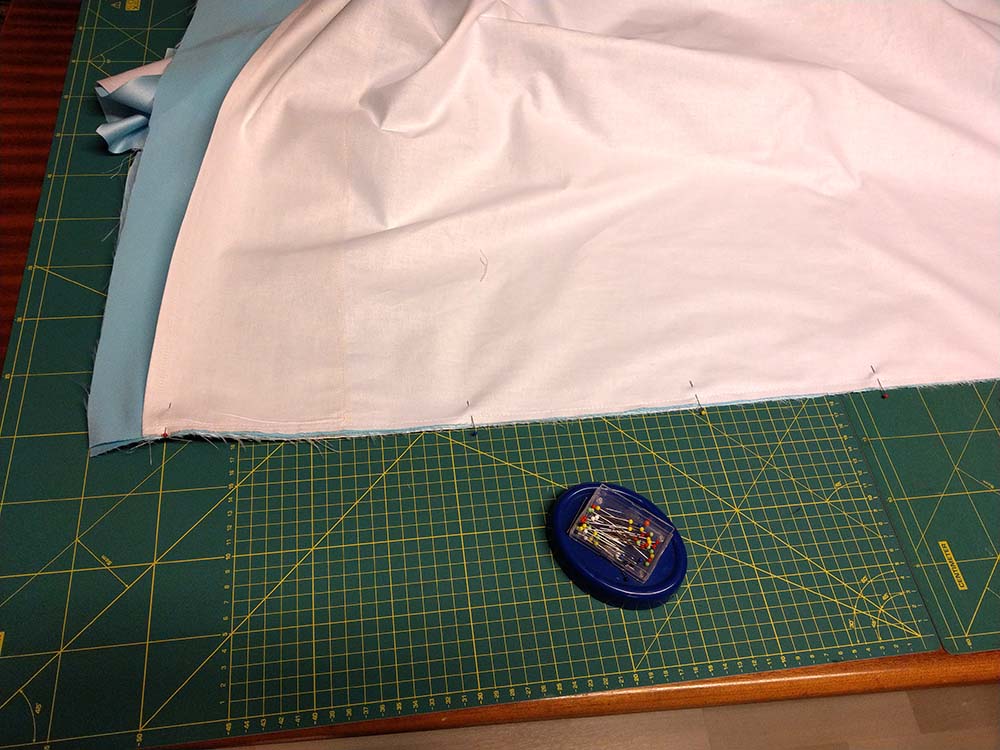
To finish the seam, turn the seam allowance of the fashion fabric around the edge of the lining towards the gament inside and fell or catch stitch to the lining. Cover the raw edge with a twill or a velvet tape.